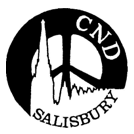
What was Anti-Semitism?
Posted: 26th October 2025
Anti-Semitism is a “thing” again, maybe even in universities. At least, Donald Trump says so, though I doubt it. Anti-Semitism is just being redefined as opposition to Israel’s war crimes against Gaza. I taught in universities in three regions for a total of between 49 and 51 years, and I don’t recall hearing a single anti-Semitic remark at a university during that time, though I sometimes heard criticism of Israeli politics, even fifty years ago.
I once wrote a book about anti-Semitism among adolescents, most of whom had never heard of Gaza or maybe even Israel, but who thought they understood Jews. Let me tell you about that.
The unedited manuscript of my book may be somewhere in my basement, but I don’t need to find it to recall the key findings. It was never published because Charlie Glock got cold feet. B’nai Brith had funded the study, as well as several others based on survey research, but this survey of teenagers had yielded crazy findings. The project had originally been directed by Brewster Smith and Jane Piliavin, but their manuscript draft was incoherent because the data had refused to cooperate.
So, after two years, Glock, then the head of the Survey Research Center in Berkeley, replaced them with me to start the analysis over from scratch.
My own conclusions made perfect sense but were not what anyone wanted to hear. So, after another two years, Glock replaced me with Robert Wuthnow, with whom he wrote the book that was actually published, Adolescent Anti-Semitism. I was credited as one of four authors. It did disclose some of my inconvenient findings, but it disguised the only causal factors that were actionable – the circumstances that could have been fixed if they’d been widely discussed.
I think Glock made a mistake, but for a forgivable reason: My own book could have been accused of blaming the victim. The net social impact would probably have been harmful. I was scared of that outcome myself. But researchers should tell the truth anyway, so I should have published the damned thing somehow.
Now at age 94, I’m tough enough to set the record straight. Presumably, the Survey Research Center at UC Berkeley still has the digitized data if anyone wants to check. I cherish many warm memories of that place. In the early 1960s, I spent many hours there, running punched cards through countersorters.
The survey was conducted in (I think) 1961 of about 4,500 teenagers in three towns: New Rochelle (a suburb of Manhattan), which we called “Commutertown”; Asbury Park, New Jersey (called “Oceanville”); and York, Pennsylvania (called “Central City”). The students in grades 8, 10, and 12 filled out long questionnaires, and I worked with a team the next summer coding their responses so the keypunch ladies could create what we called ‘IBM cards.’
Stereotypes and Prejudice
We thought we knew what the data would prove. Those were the Civil Rights movement days, and we tried to become “color blind” and prove that all ethnic stereotypes were just misunderstandings. (Years later, the “woke” movement would try to reverse our beliefs, but as a progressive person, I never gave them up.) We believed in integrating schools and downplaying the differences between groups. Our kindergarten kids decorated Christmas trees and also lit Hanukkah candles. We believed that if children knew each other, they would lack prejudice. So, we were optimistic when comparing the levels of anti-Semitism among white non-Jewish adolescents in these towns: The more contact between them, the more positive would be their relationships.
But New Rochelle schoolkids were 43 percent Jewish, yet a majority of the non-Jewish white students there endorsed anti-Semitic stereotypes. Asbury Park was 23 percent Jewish and showed a bit less anti-Semitic prejudice. Moreover, less than half a percent of the York, Pennsylvania, students were Jewish, but we found hardly any anti-Semitism there. So, the more Jewish classmates there were, the greater the anti-Semitism. Ouch…
